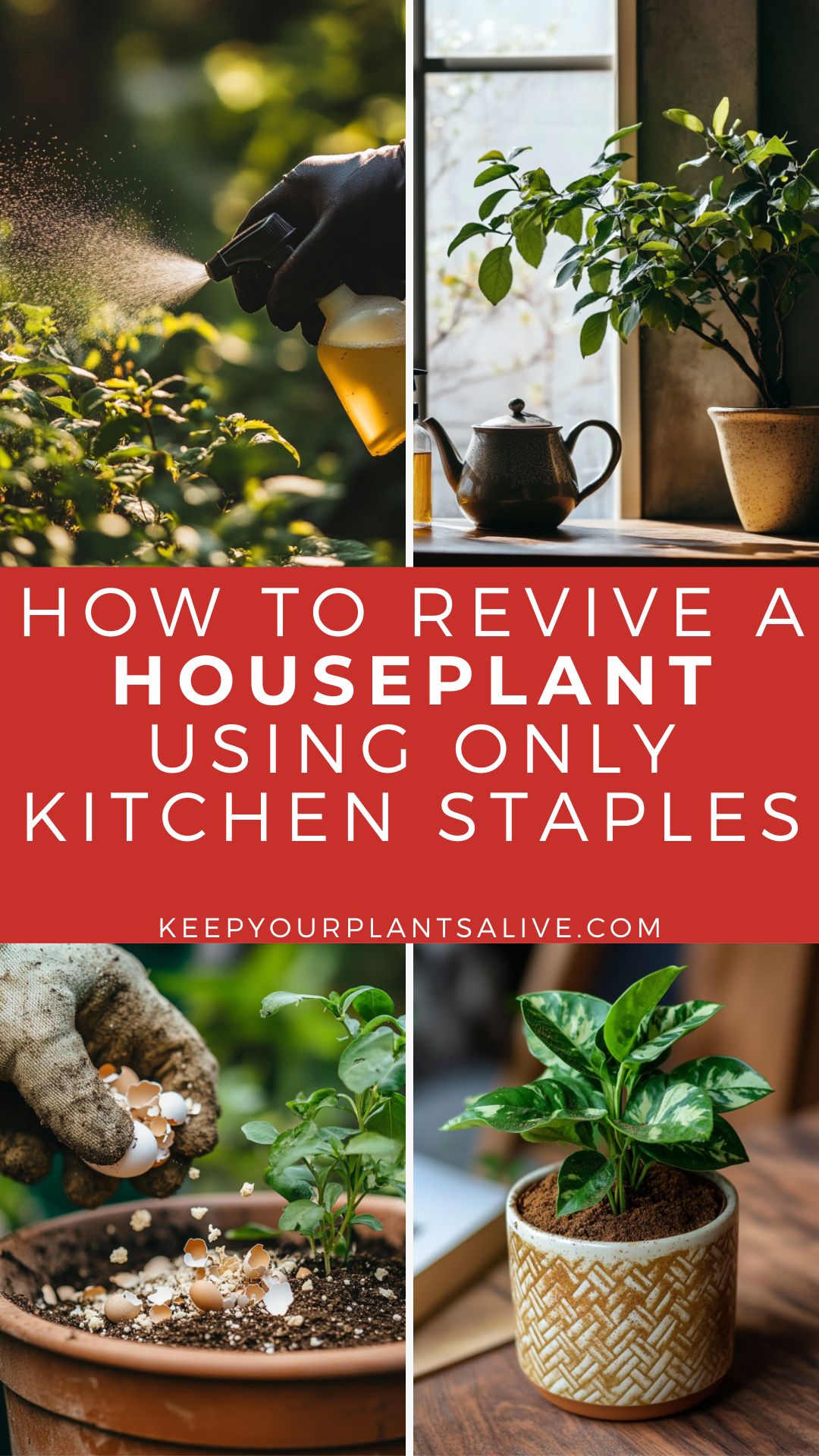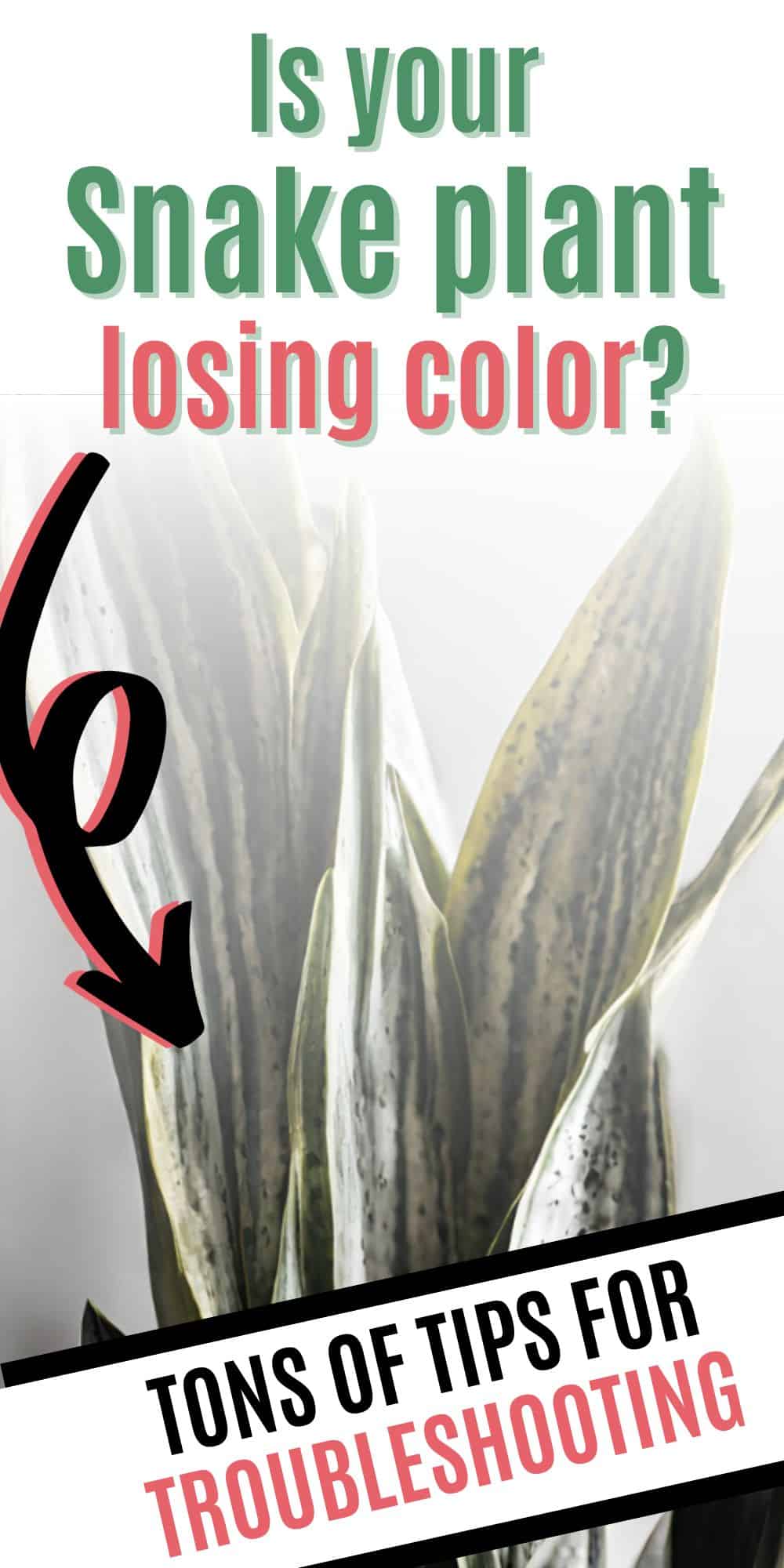Deciding on your first houseplant purchase? Let's compare Pothos vs. Snake Plant care to see which is better for a beginner houseplant owner!
I have a lot of houseplants now, but it wasn't that long ago that I had none.
My first plant was actually pothos grown from cuttings from the plants that grew by the elevators in my old office building.
Yes - I had permission to take some cuttings when they were very long and had to be pruned anyways.
As a first time houseplant shopper, it can be incredibly overwhelming to choose a plant. If you choose something complicated, honestly it can hurt your self esteem if it doesn't do well.
For that reason I always suggest Pothos or Snake plants for people who are new to plants.
Let's compare these two popular beginner-friendly houseplants to see which might be perfect for you and your home!
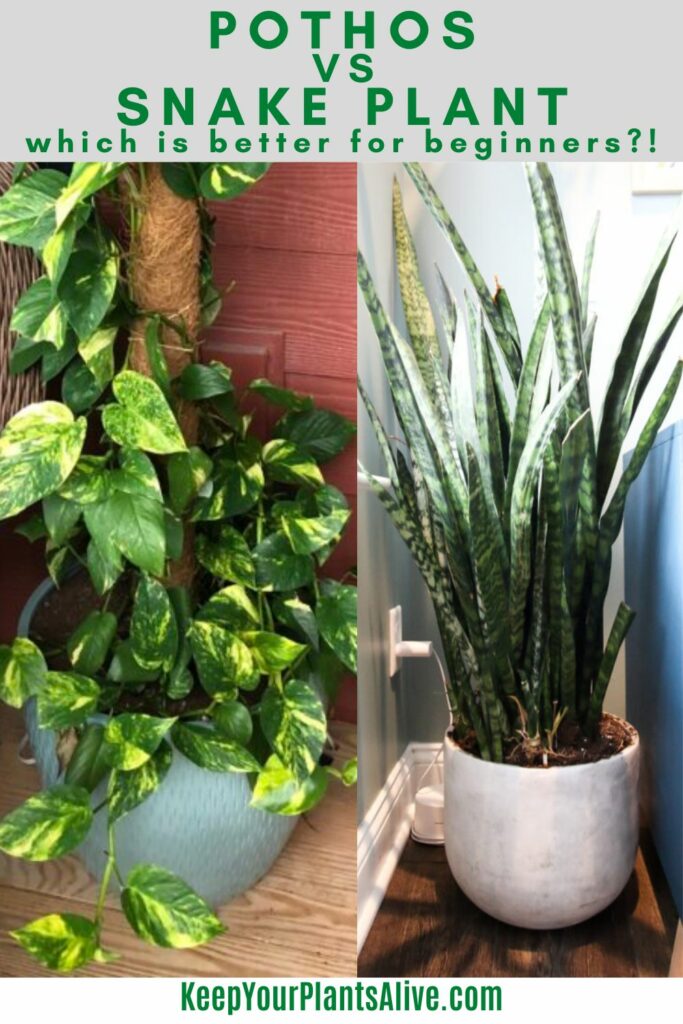
Pothos vs. Snake Plant, which is easier to care for?
Both Pothos and Snake plants are known for being low-maintenance houseplants, making them great choices for beginners or those who don't have much time to care for plants.
That being said, Pothos is generally considered easier to care for than Snake plants.
It can tolerate low to bright indirect light and can go several weeks without water, while its counterpart prefers bright indirect light and needs to dry out between watering.
In addition, Pothos is a fast grower and can quickly recover from neglect or under-watering, compared to Snake plants, which are slower and can suffer from root rot if over-watered.
Overall, both plants are great options for those looking for easy-to-care-for indoor plants, but Pothos may be a better choice for those who want a more forgiving plant that can thrive in many conditions. Let’s look at their differences together!
Pothos
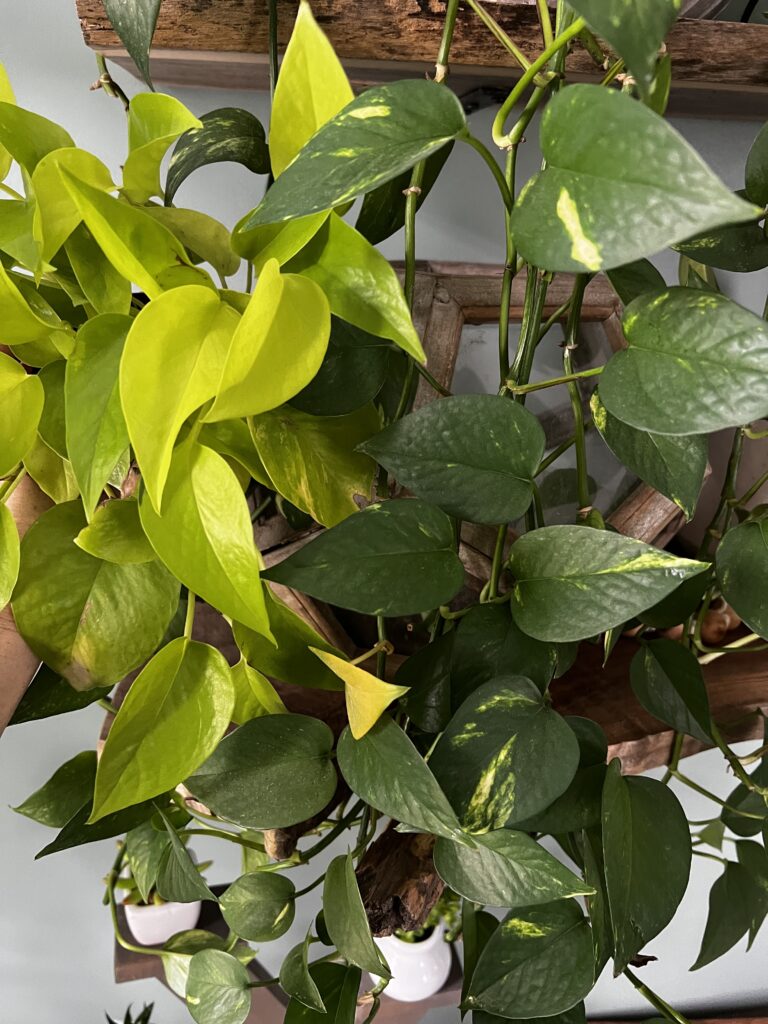
Pothos, also known as Devil's Ivy, is a popular trailing plant native to the Solomon Islands. It is known for its heart-shaped leaves and variegated patterns, ranging from yellow and green to white and green.
As previously mentioned, Pothos is a fast-growing plant that can easily adapt to various lighting conditions, from low to bright indirect light.
It can also survive in a wide range of temperatures, although it prefers warmer conditions.
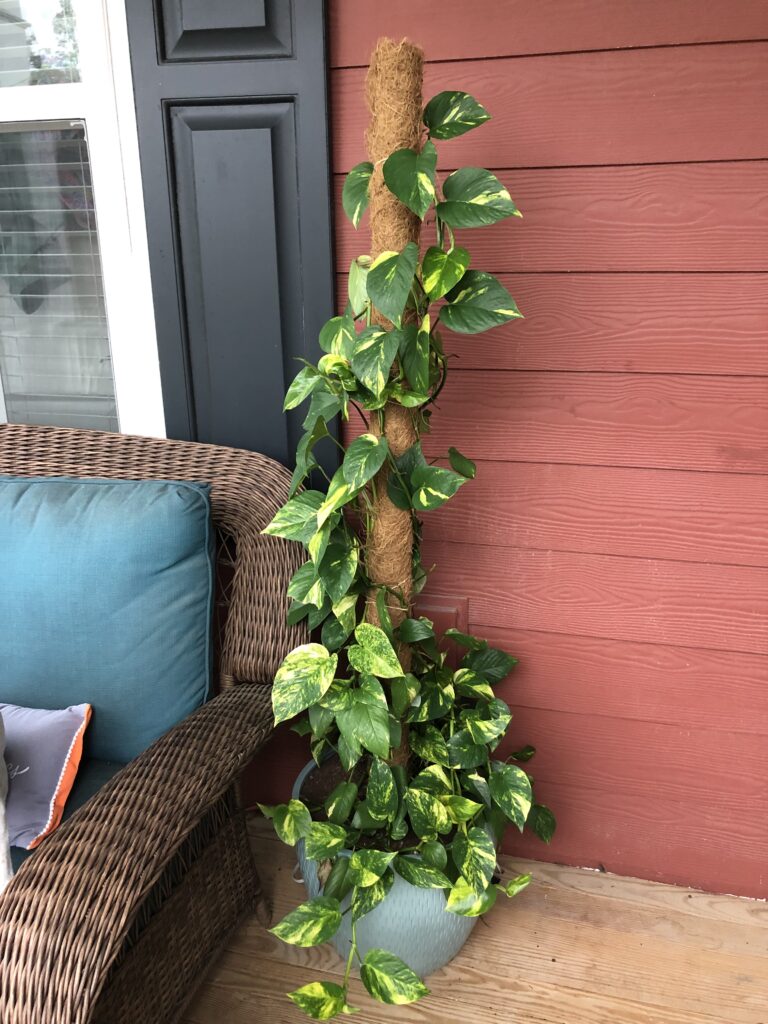
One of the reasons Pothos is so easy to care for is that it can go for several weeks without water.
In fact, it's better to underwater a Pothos than to overwater it, as this can cause root rot.
Pothos can also be propagated easily by stem cuttings, making it the best houseplant for beginners who want to try plant propagation.
Other pothos content you might enjoy:
- Golden pothos care guide
- Cebu Blue pothos care guide
- Baltic Blue pothos care guide
- Marble Queen pothos care guide
- Global Green pothos care guide
- Neon pothos care guide
- NJoy Pothos Care Guide
- Why are my pothos leaves turning yellow?
- Why are my pothos leaves turning brown?
- Why is my pothos plant not growing leaves?
- Why are my pothos cuttings rotting
- How to move pothos from water to soil
- Should I mist my pothos?
- How to make pothos fuller
- Can you propagate pothos without a leaf?
- Can you propagate pothos from a leaf?
- Can you propagate a long pothos vine?
- Where to cut pothos for propagation
- Pothos vs Snake plants: which is better for beginners?
- Cebu Blue Pothos vs Baltic Blue Pothos
- How to propagate pothos
- How to propagate golden pothos
- How to propagate a satin pothos
- How to propagate pothos in soil
- How often to water pothos plants
- How to care for variegated pothos
- How to revive a dying pothos plant
- Why are my Pothos leaves curling?
- How to identify and treat common pothos pests
- How to divide pothos plant
- How to make pothos grow bigger leaves
- Why does my pothos only have one vine?
- Can you grow pothos in low light conditions?
- How to cut off dead pothos leaves
- Are pothos plants toxic to cats and dogs?
- Can you grow pothos in water?
- Why is my pothos droopy?
- Why is my pothos plant dropping leaves?
Printable Pothos Plant Care Guide
Join the (free!) KeepYourPlantsAlive+ community to access this exclusive printable plant care guide! Or keep scrolling for more!
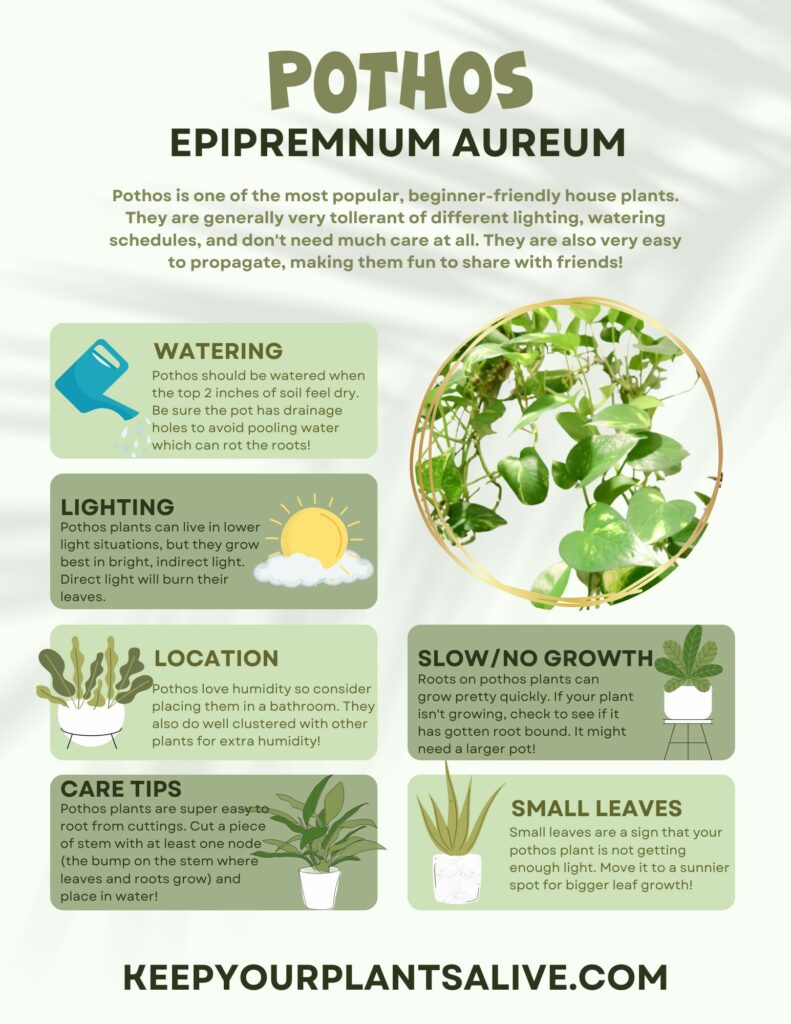
Snake plants
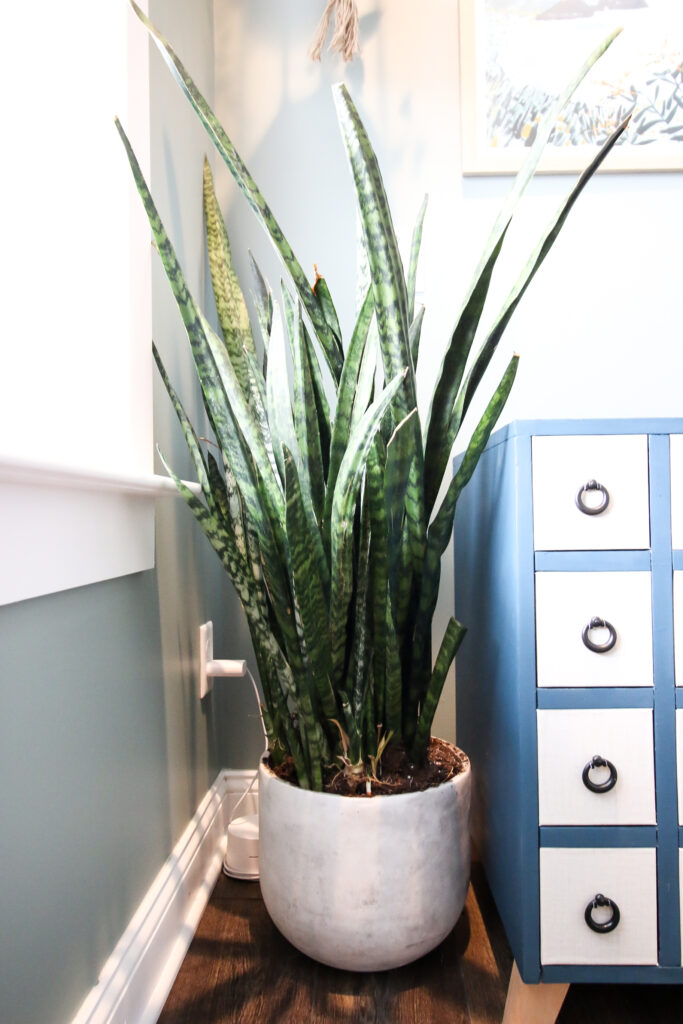
Snake plants, also known as Sansevieria or Mother-in-Law's Tongue, are native to West Africa and known for their long, upright leaves growing up to several feet tall.
Snake plants come in a variety of cultivars, ranging from the classic green and yellow-striped leaves to more unusual varieties with silver, white, and even black leaves.
Like Pothos, Snake plants are relatively low-maintenance houseplants and can tolerate various lighting conditions.
However, they require bright indirect light to thrive and should not be placed in direct sunlight.
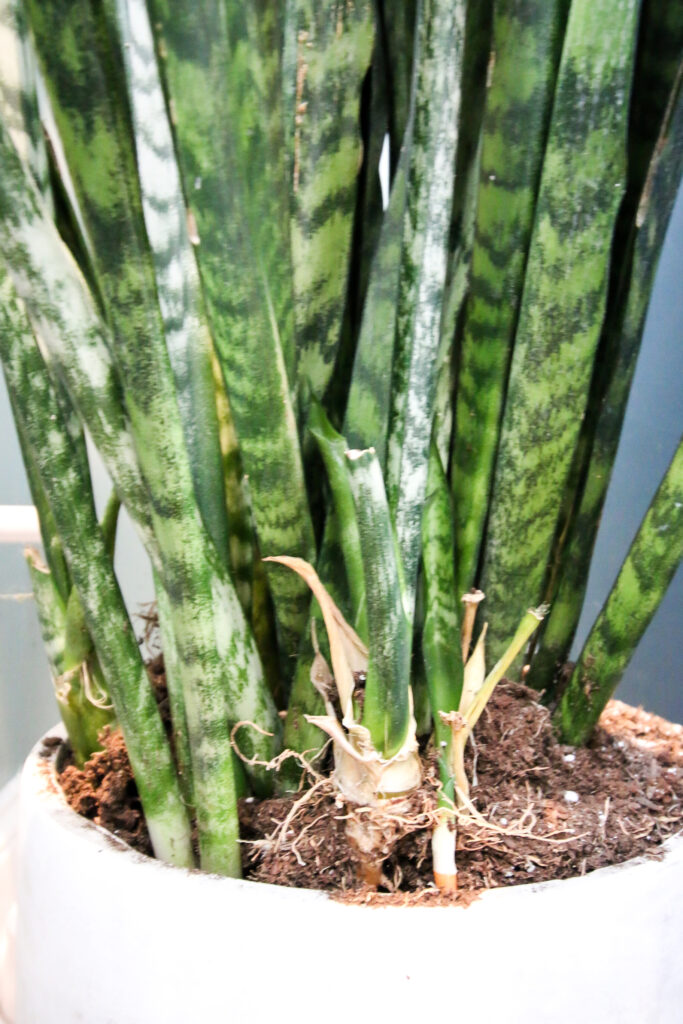
Snake plants are also drought-tolerant and can go for several weeks without water, but they prefer to dry out completely between waterings.
One of the benefits of Snake plants is that they are known for their air-purifying abilities.
According to NASA research, Snake plants effectively remove toxins like formaldehyde, benzene, and trichloroethylene from the air.
This makes them a great choice for people who want to improve the air quality in their homes or offices.
More snake plant goodness!
- Snake plant care guide
- Sansevieria Fernwood care guide
- How to propagate snake plants
- Why is my snake plant getting brown tips?
- Why is my snake plant turning yellow?
- Why is my snake plant drooping?
Free printable snake plant care guide!
Join the (free!) KeepYourPlantsAlive+ community to access this exclusive printable plant care guide! Once you sign up, you can right click & save the JPG care guide. Or keep scrolling for more!
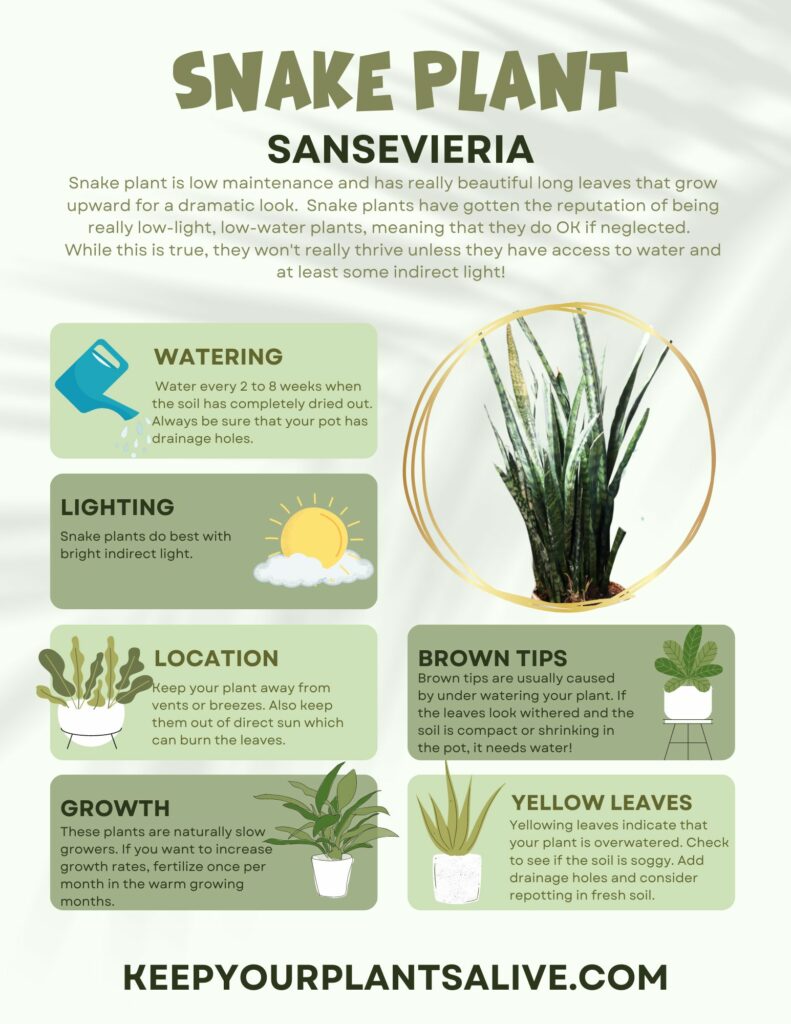
Watering - pothos vs snake plant
When it comes to watering Pothos and Snake plants, it's important to remember that both plants are fairly tolerant of drought and can handle a little bit of neglect.
Here are some guidelines for watering each plant:
Pothos:
- Allow the soil to dry out completely before watering. Poke your finger into the soil, and if it feels dry up to your first knuckle, it's time to water.
- Water thoroughly until water drains out of the bottom of the pot, but avoid letting the plant sit in standing water.
- During the growing season (spring and summer), water Pothos once a week. In contrast, during the dormant season (fall and winter), you can cut back to watering every two to three weeks.
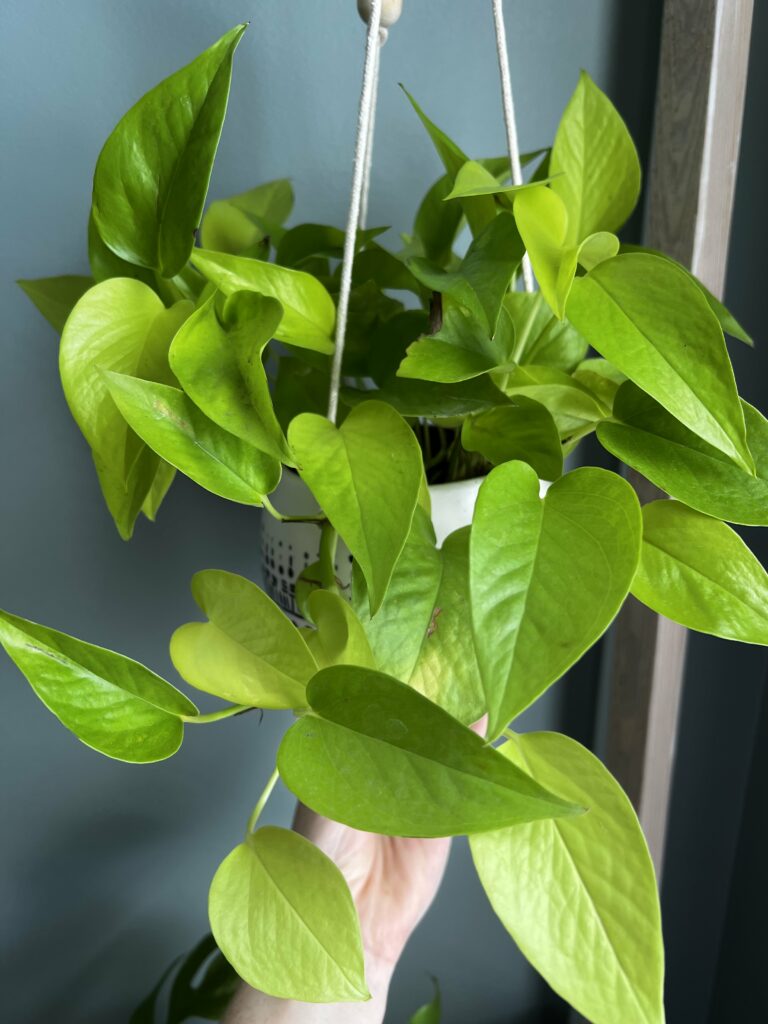
Snake plant:
- Allow the soil to dry out completely between waterings. This means waiting until the top inch of soil is dry before watering.
- Water thoroughly, ensuring the water drains out of the bottom of the pot.
- During the growing season (spring and summer), water Snake plants once a week, while in the dormant season (fall and winter), you can cut back to watering every two to three weeks.
One thing to keep in mind with Snake plants is that they are susceptible to root rot if they are overwatered or if they sit in standing water.

Here's our complete guide to drilling drainage holes in ceramic pots to avoid pooling water and root rot.
Lighting - pothos vs snake plant
Both Pothos and Snake plants are fairly versatile in lighting, but they have slightly different preferences.
Here are some guidelines for providing the right light for each plant:
Pothos:
- Pothos can tolerate various lighting conditions, from low to bright indirect light.
- If you have a variegated Pothos, it will do best in bright indirect light to maintain its coloration. Solid green Pothos can handle lower light conditions.
- Avoid placing Pothos in direct sunlight, as this can scorch the leaves.
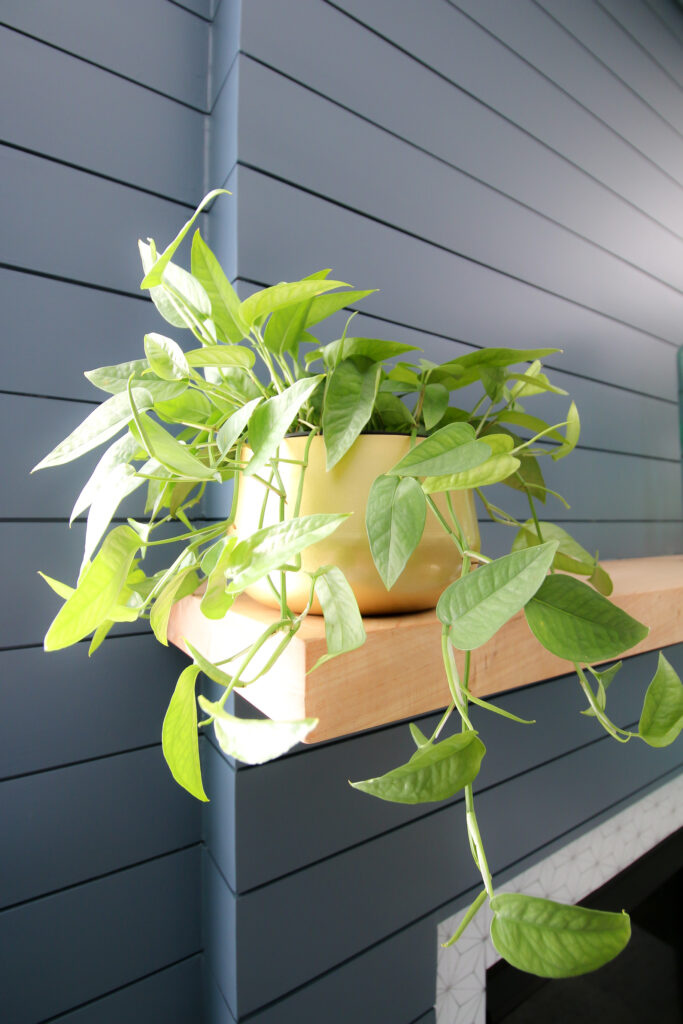
Snake plant:
- Snake plants prefer bright indirect light, but they can also tolerate low light conditions.
- In low light, Snake plants may grow more slowly and their leaves may become darker green and less stiff than those grown in brighter light.
- Avoid placing Snake plants in direct sunlight, as this can cause the leaves to burn.
One thing to keep in mind with both plants is that they will adapt to their lighting conditions over time.
If you move your plant to a new location with different lighting, give it a few weeks to adjust before making any further changes.
Care tips - Pothos vs Snake plants
Here are some general care tips for both pothos and snake plants!
Pothos
- Temperature: Pothos prefers temperatures between 60-85°F (15-29°C) and is sensitive to cold drafts.
- Fertilizing: Pothos can benefit from regular fertilizing during the growing season (spring and summer). Use a balanced, water-soluble fertilizer every two weeks or so.
- Pruning: Pothos can become leggy over time, so it's a good idea to prune back the stems occasionally to promote bushier growth. You can also propagate Pothos easily from stem cuttings.
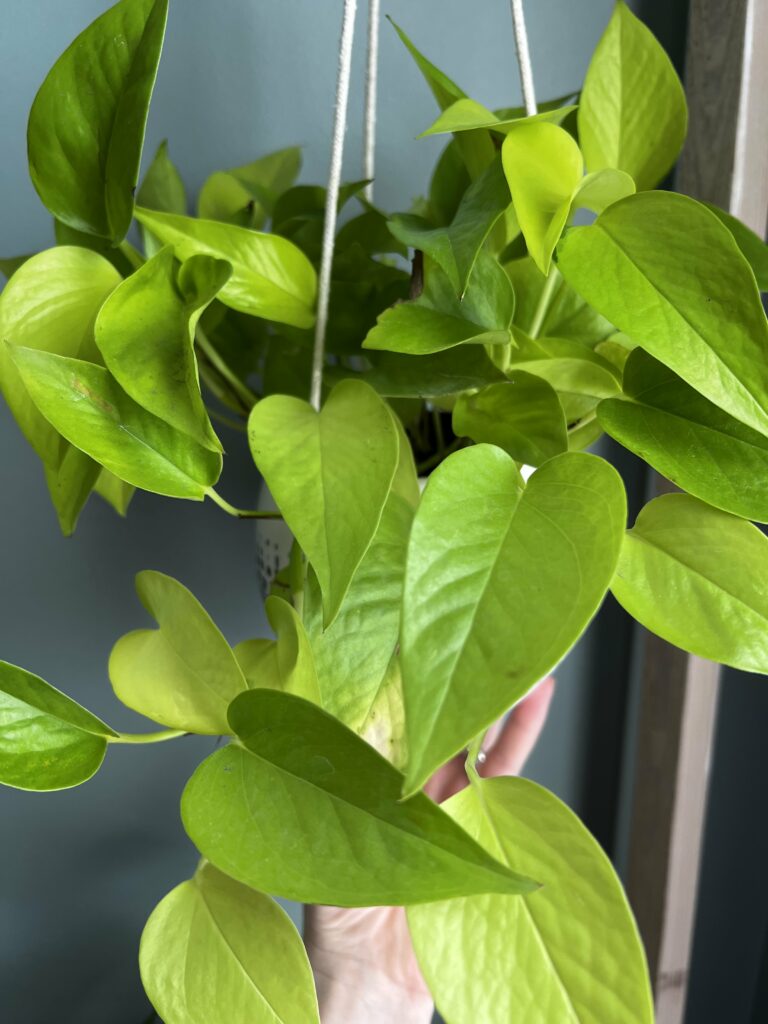
Snake plant
- Temperature: Snake plants prefer temperatures between 60-85°F (15-29°C) and can tolerate a range of humidity levels.
- Fertilizing: Snake plants do not require frequent fertilizing, but you can use a water-soluble fertilizer once a month during the growing season.
- Pruning: Snake plants are slow growers and do not require frequent pruning. However, you can trim off any yellow or damaged leaves to keep the plant looking its best.
Snake Plant vs Pothos - which is better for a beginner?
Overall, when talking about Pothos vs Snake plants, both are fairly easy to care for and can tolerate a range of growing conditions. The most important thing is to avoid overwatering and provide appropriate lighting for the plant.
So that poses the question – which one is right for you?
While the choice is completely up to you, we recommend getting a Snake Plant if you’re a complete beginner. Compared to its counterpart, it can stay unattended for much longer, and since you’re new, you’re bound to forget their needs, like watering (don’t worry, you’ll get the hang of it!).
On the other hand, Pothos is the perfect option for those who are a bit more responsible, and know how to handle plants to a certain extent. Additionally, if you have a bright spot on your window pane, that will be the perfect spot for it!
We hope that this can help clear the dilemma between Pothos vs. Snake Plants.
Be sure to check out our free houseplant starter guide and give your plants the best care possible!
Thanks for reading!


Hey there, I'm Morgan, a houseplant enthusiast from sunny Charleston, South Carolina. Growing up surrounded by my mom's lush orchids and African violets, I discovered the magic of bringing nature indoors. Thanks to the pandemic, I delved deeper into houseplants, discovering their power to uplift moods and transform spaces. I'm here to spill all my secrets, helping you pick the perfect houseplant - and make it happy. Let's keep your plants alive, together! 😊

